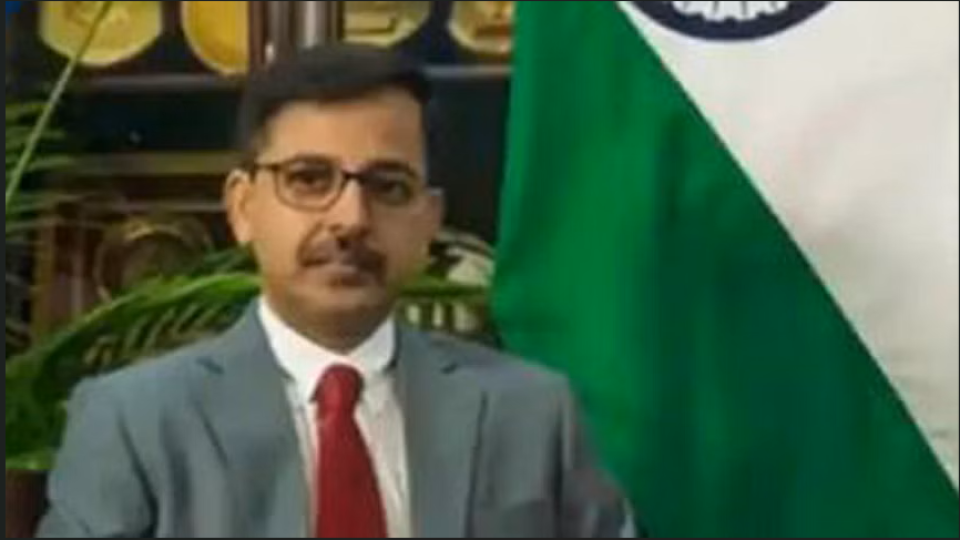May 3, 2023
DHAKA – Bangladesh’s exports to India may increase by 300 per cent in a year if the multimodal transport connectivity, including roads and highways, waterways, coastal shipping and railway, can be optimally utilised, said Pranay Kumar Verma, Indian high commissioner to Bangladesh, yesterday.
“Better connectivity is indeed the centre for improving the ease of doing business and ease of living,” he told a seminar on “Multimodal Connectivity between India and Bangladesh” organised by Unnayan Shamannay at Bishwo Shahitto Kendro in Dhaka.
Since 1972, there have been 10 protocol river routes in operation for transporting goods between the two countries and the quantity of goods transported have now increased 39 times since what was around two decades ago, he said.
The goods were transported on Bangladeshi vessels 90 per cent of the time, said Verma, adding that India has also offered Bangladesh use of select Indian airports and river ports for sending exports to third countries.
Seven border haats are now in operation and there is demand for more, he said.
On the connectivity issue, Verma mentioned the inauguration of a “friendship” pipeline by the prime ministers of the two countries with a capacity for supplying Bangladesh one million tonnes of diesel a year.
The high commissioner also shared different facts of the bilateral trade and investment connectivity.
For instance, Bangladesh is India’s largest trading partner in South Asia and fifth largest worldwide. Over the last five years, the bilateral trade reached $15 billion from $7 billion,
he said.
Over a decade ago, India gave duty-free trade benefit to nearly all Bangladeshi goods, except for liquor, arms and tobacco, under a South Asian Free Trade Area (Safta) agreement and the garments sector is performing strong.
The trade balance is in favour of India thanks to the shipment of more value-added items by Indian businesses. Bangladesh’s exports to India stood at $1 billion four years ago and now has reached $2 billion, he said.
Both countries will soon start negotiations for signing a comprehensive economic partnership agreement (Cepa) to harness business potentials and for growing mutual benefits, said Verma.
The Cepa will ensure a more robust economic linkage between the two economies and help enhance the trade and investment ties by creating a new institutional framework and new supply chain, he said.
At the same time India and Bangladesh are exploring other innovative ways, such as settlement of bilateral trade in the Indian rupee, which can provide a new boost to the trade partnership, he said.
Last year the Indian embassy in Bangladesh issued 1.5 million visas, he said.
Both countries were able to revive seven railway routes for both passenger and freight which existed in 1965, said Verma.
In addition, cross-border buses today operate along five different routes connecting Bangladesh with Tripura, West Bengal, Meghalaya and Assam of India, he said.
Both countries have also restored and resumed train and bus services suspended during the pandemic, he added.
Some 40 per cent to 45 per cent of the bilateral trade and a significant portion of the people-to-people movement are channelled through 36 functioning land customs stations, said the high commissioner.
Four of the customs stations have been upgraded to modern integrated check posts and another at Dawki in India will soon be upgraded, he said.
It took 47 years for Bangladesh’s export to India to reach $1 billion and it reached $2 billion in the last four years, which indicates that the bilateral trade is growing, said Mustafizur Rahman, a distinguished fellow of the Centre for Policy Dialogue (CPD).
However, many things needed to be done earlier for increasing the exports, he said, adding that a motor vehicle agreement and introduction of a single window to facilitate bilateral trade has not become operational yet.
The borders are still control points which should have been crossing points, he said.
Bangladesh’s policymakers and implementing agencies should especially prioritise trade with the northeastern Indian states, urged Ahsan Khan Chowdhury, chief executive officer of Pran-RFL Group.
Ensuring strong connectivity with the Chattogram port for Tripura’s businesspeople will benefit the masses of both countries, he said.
India and Bangladesh remain each other’s largest trading partners within South Asia, pointed out Atiur Rahman, chairperson of Unnayan Shamannay.
Yet the level of trade remains sub-optimal and there is no alternative to enhancing the connectivity, he said.
The discussants also highlighted energy trade, ICT-based solutions, policies to set common standards etc.


